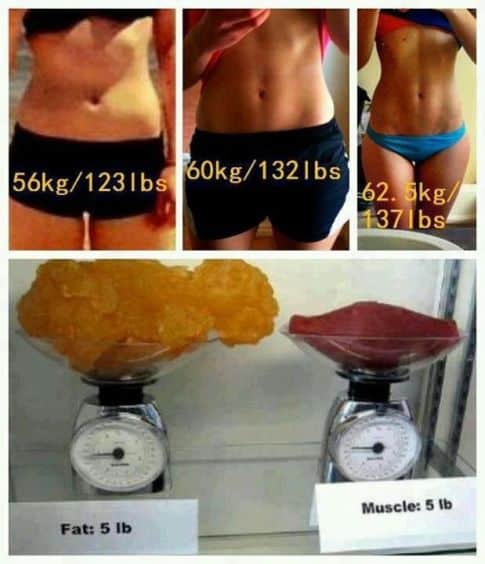by 24fit | Apr 5, 2013 | 24 Fit Challenge, Body Composition, Fat Burning, Motivation, Strength Training
Whether you’ve been on a nutrition or fitness program, at some point you’ll hit a plateau where it seems efforts don’t equal results.
A weight loss plateau can zap your motivation, but understanding the reasons behind it can help you meet your goals. According to Susan Bowerman, MS, RD, CSSD, “When you cut back on your calories, your body reacts as if there’s no more food coming its way. So it does what it’s programmed to do — it hangs onto stored up calories by slowing down the rate at which you burn them.”
Further, as your weight drops, your metabolic rate naturally goes down a bit, too. “That means as you lose weight, your calorie needs also drop somewhat. So, to keep losing at the same rate, you need to either cut your intake further, or exercise more — or accept that your rate of weight loss will be slower as you approach your goal.”
From an exercise perspective, you may be pushing yourself harder and harder but the results seem to be slowing. “Pushing your body to the point of exhaustion can spell disaster for your fitness goals. You’ve got to build in time for your body to recharge,” states former Olympian Samantha Clayton, Herbalife’s director, worldwide fitness education. “Then when you start training again, you’ve got a renewed energy and focus.”
Here are eight tips to move off the weight plateau:
• Use a food diary to keep track of your calorie intake – You may have been more careful when you started your diet — weighing and measuring everything that passed your lips — but you might not be as accurate as you once were. This will get you back on track.
• Replace two meals a day with a protein shake to help you stay within your calorie limit. When you make your shake, you know exactly what goes into it — and how many calories are in the protein powder, the milk and the fruit — so it takes the guesswork out of calorie counting. Use the shake for two meals a day, have a healthy third meal, and fill in with snacks of low fat protein foods, veggies and fruits.
• Dine out less often – No matter how careful you think you are when you go to a restaurant, it’s usually difficult to accurately estimate how many calories you’re eating, because it’s often hard to tell exactly how foods are prepared.
 • Step up your activity, particularly strength training – If you’ve been working out for a while and haven’t increased the intensity of your activity, you might not be burning as many calories as you used to. Add some new moves to your exercise routine, increase the intensity, and pump some iron.
• Step up your activity, particularly strength training – If you’ve been working out for a while and haven’t increased the intensity of your activity, you might not be burning as many calories as you used to. Add some new moves to your exercise routine, increase the intensity, and pump some iron.
• You might actually be at the right weight – If you can, get your body composition checked. Muscle is ‘denser’ and takes up less space than body fat — so if you are carrying more muscle than the average person, you might weigh more than you think you should. If your body fat is within normal range, then you may not have much — if any — additional weight to lose.
• Avoid fatigue – Your body needs to re-generate, restore and repair itself often. Your pain receptors will make movements uncomfortable and your joints can become tender when you push your body too hard. The nervous system also needs time to rest in order to adapt and improve from training.
• Follow your natural cycle – Athletes train in cycles for a reason, the timing of training may vary from athlete to athlete but one common factor in every athlete’s training program are pre-planned rest days. A well-rested body will get better results than a tired one.
• Spark excitement – If you are putting your body through the motions day after day, you can become complacent and your exercise intensity is likely to drop without you even realizing. Taking a day or two off from your current workout routine can make you come back to the gym with a renewed commitment and excited approach.
Bowerman is a paid consultant for Herbalife.
by 24fit | Mar 30, 2013 | Cardiovascular, Flexibility, Strength Training, Stretching
There are a hundred ways to exercises but we can lump exercise into three broad categories: strength training (weightlifting, core training), cardiovascular conditioning (running, cycling, aerobics), and flexibility training (yoga, stretching). Let’s look at the specific ways in which each promotes optimal health and function:
Flexibility Training
- Improves range of motion
- Reduces risk of injury
- Reduces post-workout soreness
- Improves posture
- Improves circulation to muscles
- Enhances neuro-muscular coordination
- Improves balance
Cardiovascular Conditioning
- Increases oxygen intake
- Increases the body’s oxygen use efficiency
- Increases cardiac output and efficiency
- Increases blood volume
- Improves stamina
- Improves lung health and capacity
- Reduces blood pressure and lowers resting heart rate
- Improves cholesterol ratio (HDL/LDL)
- Increases insulin sensitivity
- Improves circulation to active muscles
- Decreases symptoms of anxiety and depression
Strength Training
- Maintains strength and power
- Increases lean body mass
- Greater core strength prevents back problems
- Boosts metabolic rate by up to 15%, aiding in weight control
- Prevents osteoporosis
- Increases ligament tensile strength
- Increases tendon tensile strength
The 24 Fit Programme, developed by Robert Forster in conjunction with Herbalife , includes stretching exercises, metabolic workouts and strength training. Forster of Santa Monica is a physical therapist and is Founder and CEO of Phase IV Scientific Health and Performance Center in Santa Monica California specializing in rehabilitation and health and fitness programs for athletes and the general public.
One key to exercises is to find something that you can do on regular basis that dosent take too long i.e. 30 minutes, thats habit forming. With 24Fit alternate daily between cardio and strength training exercises, and include flexibility /stretching exercises with every workout.
Take the 24 Fit Challenge
Thanks to Dr. Louis Ignarro and Dr. Andrew Myers for this list. Health Is Wealth
by 24fit | Mar 1, 2013 | Strength Training
 If you are trying to lose weight or just wanting to maintain your body weight as you age, increasing your metabolic rate (the amount of energy expended per day) is the key to sustainable weight loss. There are many ways to give your metabolism a boost – including exercising at the right intensity, eating right, and putting on more muscle.
If you are trying to lose weight or just wanting to maintain your body weight as you age, increasing your metabolic rate (the amount of energy expended per day) is the key to sustainable weight loss. There are many ways to give your metabolism a boost – including exercising at the right intensity, eating right, and putting on more muscle.
This includes aerobic workouts to burn more calories in the short term, and weight training to build the muscles that will boost your metabolism in the long run.
Strength training with weights or other forms of resistance,(like bands) will increase muscle mass. Muscle is more metabolically active than fat; therefore the more lean body mass you have the higher your metabolism will be. Incorporating a sound weight training plan to your routine will significantly speed up the weight loss process. Since muscle burns more calories than fat — even while at rest — the more muscles you have, the higher your resting metabolic rate, which means the more calories your body will be burning just to sustain you
Every pound of muscle in our bodies burns 7-10 calories a day, while each pound of fat burns just 2 calories per day. While 30 minutes of aerobic exercise may burn more calories than 30 minutes of weight training. In the hours following the cessation of exercise, the weight training has a longer-lasting effect on boosting metabolism.
Having extra muscle also means you can eat more and gain less. Some women fear they’ll “bulk up” with weight training. But women don’t have the hormones necessary to develop those huge muscles, so you can feel good about doing weight training.
Your best bet for keeping metabolism revved: Build muscles, snack on low-calorie, high-protein foods, and keep moving!
by 24fit | Jan 18, 2013 | Body Composition
Its not the weight you are that’s important its what the weight is made up of!

Take The 24 Fit Challenge
by 24fit | Jan 15, 2013 | Strength Training
 This week, I’m sharing three reasons for you to pick up some weights and make yourself stronger. Skinny is out and a strong looking physique is definitely the new sexy. You just have pick up a magazine to see that having some meat on your bones is a good thing. Toned and muscular women are now gracing the covers of popular magazines and even celebrities are sporting a more toned appearance.
This week, I’m sharing three reasons for you to pick up some weights and make yourself stronger. Skinny is out and a strong looking physique is definitely the new sexy. You just have pick up a magazine to see that having some meat on your bones is a good thing. Toned and muscular women are now gracing the covers of popular magazines and even celebrities are sporting a more toned appearance.
All joking aside, the media may continue to show us what they think is an acceptable body type for 2013, but a healthy body never goes out of fashion. Have you heard of the term skinny fat? This is when someone may look skinny but has an unhealthy internal body-fat ratio that is detrimental to his or her health. I know there are also many people who may look a little larger but are a picture of health internally.
If you have read any of my previous posts you will know by now that my focus with any exercise plan is to benefit the inside of your body as a priority. The bonus is that exercise changes both your internal health and your external appearance. Take a look at my top three reasons why you should add weight/strength training to your life. Making time to lift a weight correctly will help you gain a little muscle and positively impact your health.
Three reasons to get stronger now:
Burn more calories
By lifting weights and becoming strong you’ll be changing every aspect of your body. People with increased muscle-mass burn more calories at rest than those without. It takes more energy for your body to sustain lean muscle and, therefore, your resting metabolic rate may increase as a result of lifting weights.
Improved bone density
Weight-bearing exercise is very beneficial for bone health in people of all ages. The aging process is linked to a decrease in bone density and a greater risk of fractures. And, this New York Times article shows that lifting weights can increase your bone density by as much as 2-8% per year, so consider how you can add weights to your workout because your bones rely on resistance training to stay healthy and strong.
Improved performance
If your body gets used to lifting weights, imagine how much easier just lifting your own body weight will be! Improved strength means that your daily activities will become easier and, if you are training for a sport, an increase in muscular strength can drastically improve your performance.
Strength Training:
Becoming stronger has so many benefits and you don’t need to be worried about starting to look like an out-of-proportion body builder,. Trust me when I say that unless you are dedicating hundreds of hours to lifting serious weights, and following a very specific body-building nutrition plan, the chances of you getting bulky are slim. Adding weight-training to your routine two to three times a week and eating a protein-rich diet will have you well on your way toward achieving a healthy physique.
Don’t be afraid of lifting heavy weights but do make sure that you start out with manageable lighter weights, so that you can focus on technique for 12-15 reps and slowly work your way up to heavier weights. As you increase the weight you are using, decrease to 8-10 reps. Your body will start adapting to weight training right away, so get started today.
I hope I have convinced you to get strong and add some weight training to your life, and, if my health reasons aren’t enough to convince you to start reaching for that dumbbell… let fashion be your guide!
Written by Samantha Clayton. Samantha is a paid consultant for Herbalife.
 • Step up your activity, particularly strength training – If you’ve been working out for a while and haven’t increased the intensity of your activity, you might not be burning as many calories as you used to. Add some new moves to your exercise routine, increase the intensity, and pump some iron.
• Step up your activity, particularly strength training – If you’ve been working out for a while and haven’t increased the intensity of your activity, you might not be burning as many calories as you used to. Add some new moves to your exercise routine, increase the intensity, and pump some iron.



